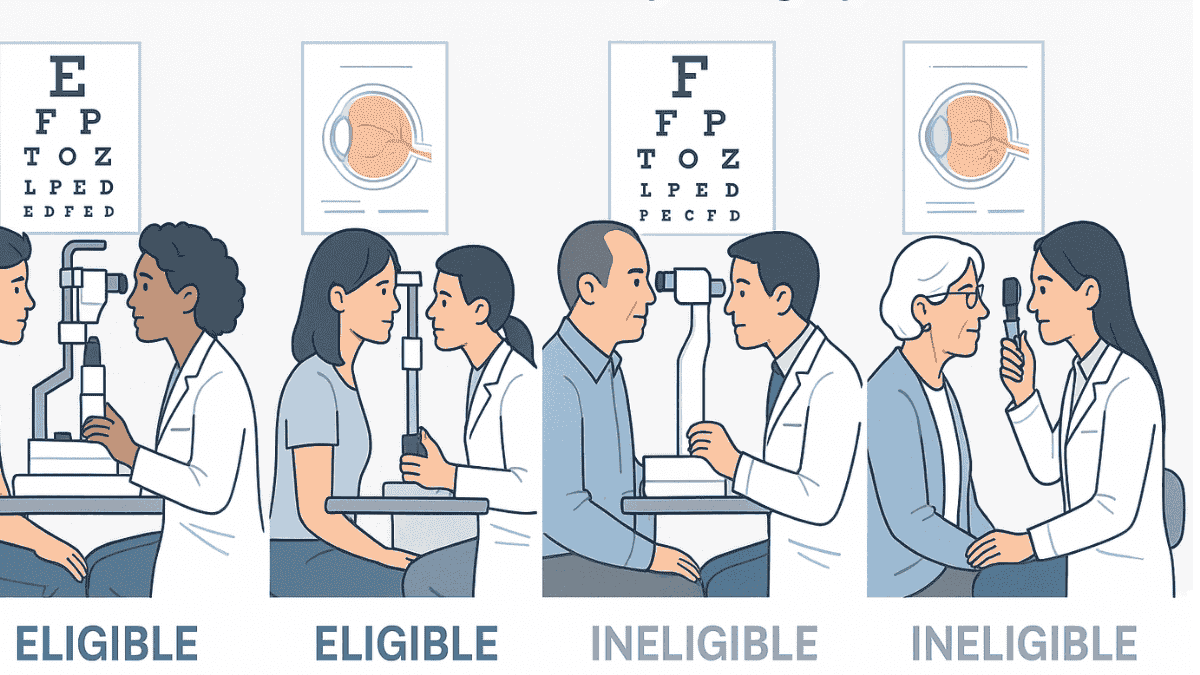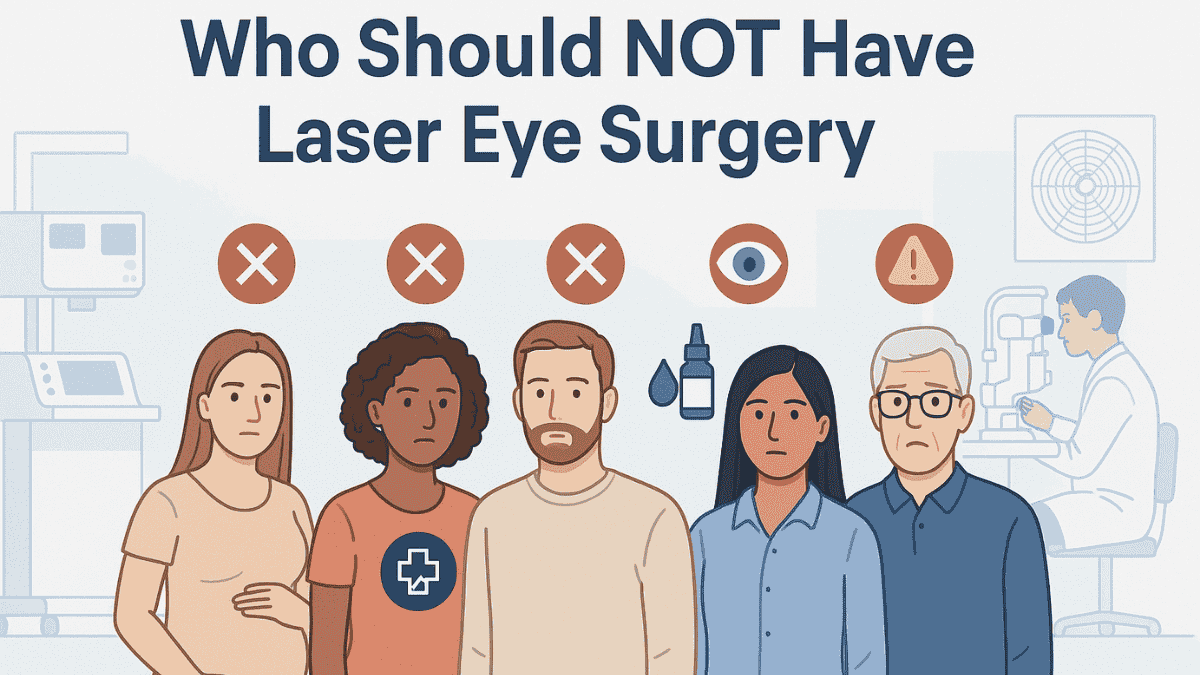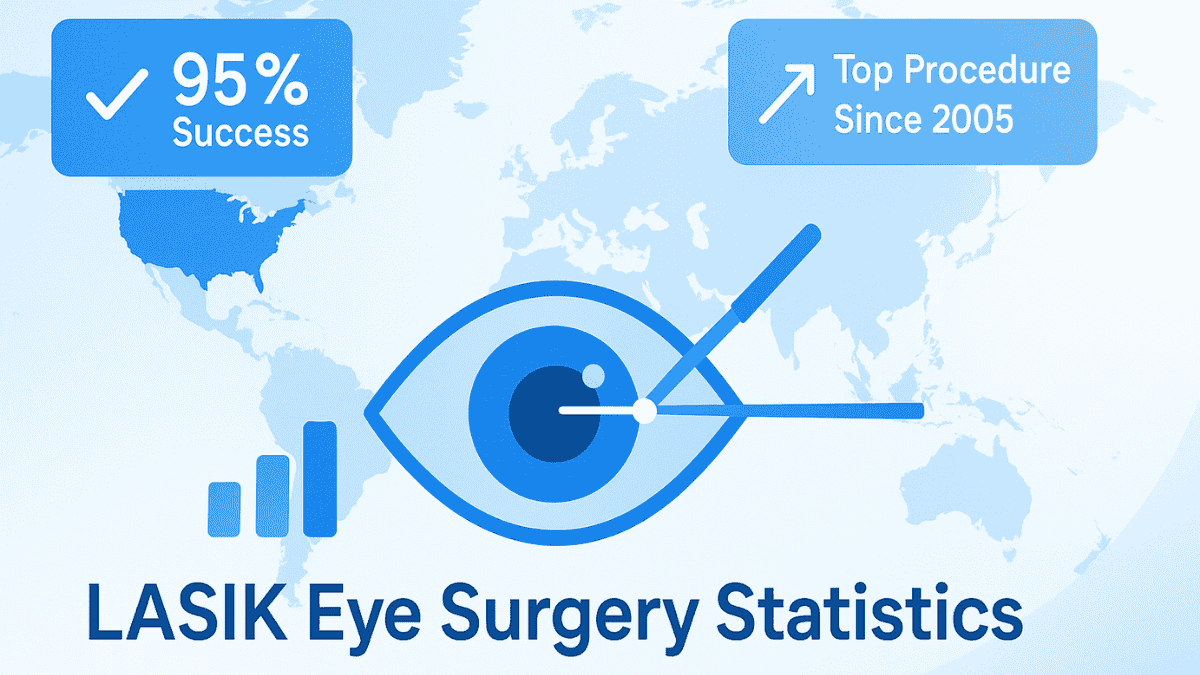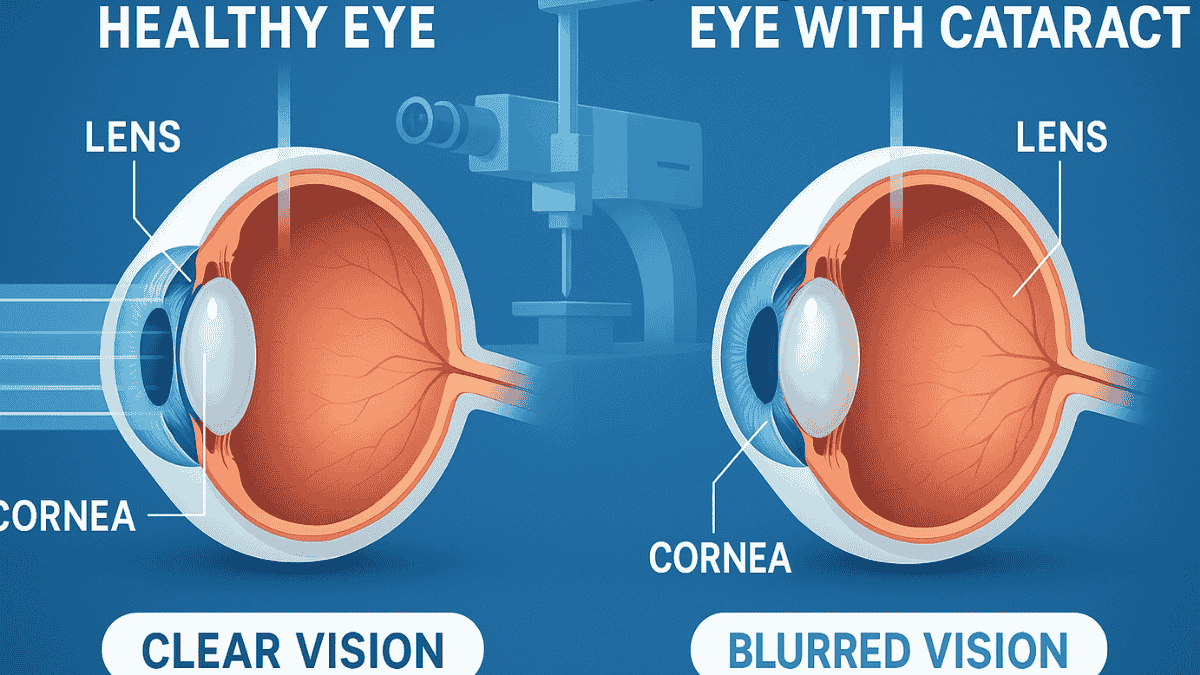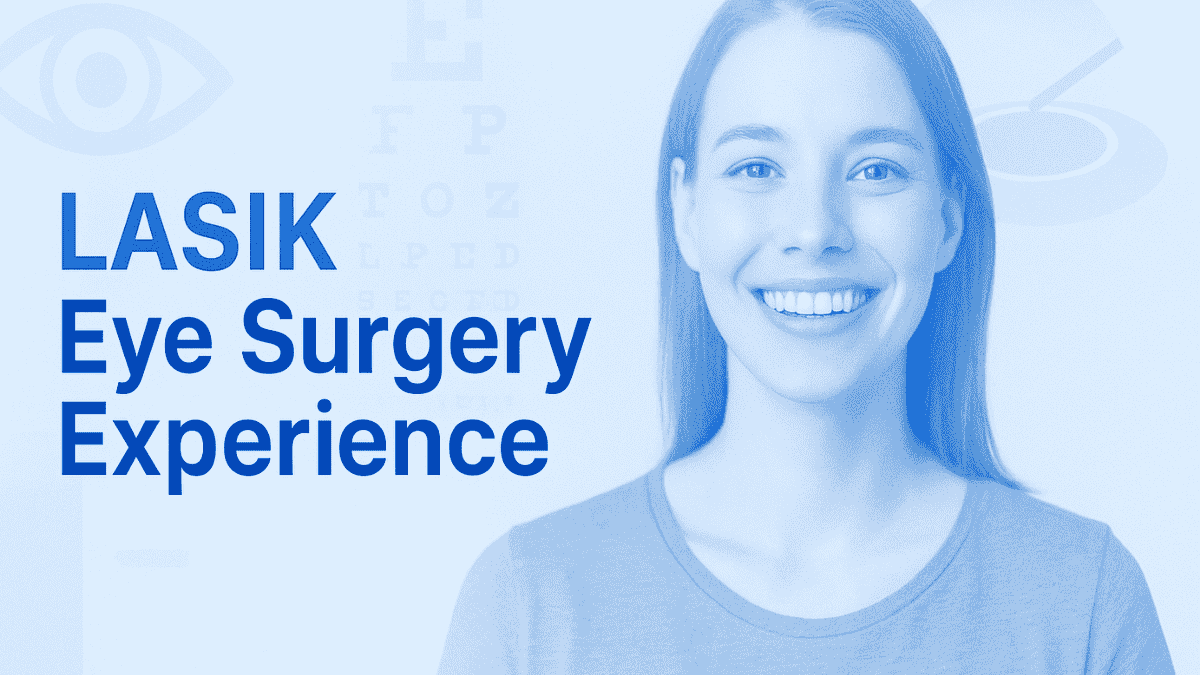
Thinking about ditching your glasses or contacts? I get it. For years, the thought of clear vision without them felt like a distant dream. My own LASIK eye surgery experience changed everything, and maybe hearing about it can help you. If you’re curious about what a real LASIK eye surgery experience feels like, from start to finish, you’re in the right place.
My days began with fumbling for glasses or the ritual of contact lenses and solution. I constantly hoped they wouldn’t irritate my eyes that day, a feeling many who wear contact lenses can understand. Beach days were blurry, and swimming meant a choice between seeing clearly and enjoying the water.
It felt like a constant hassle, a small but persistent drain on my freedom. I often wondered what it would be like to just wake up and see. This yearning really pushed me to look into more permanent solutions for my refractive errors.

Table of Contents
My Daily Battles with Corrective Lenses
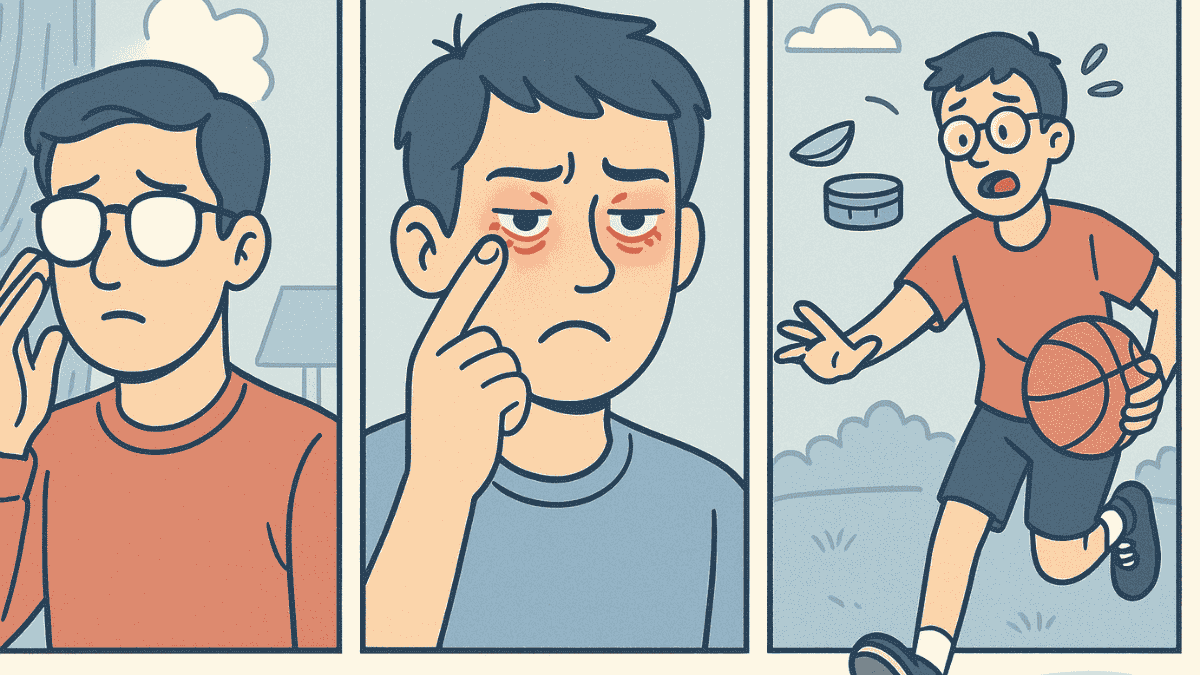
Remember those foggy glasses when you walk into a warm room? Or the panic when a contact lens tears or gets lost? These were my daily struggles.
I envied people who could just hop out of bed and see the world clearly. Playing sports was always a challenge due to my reliance on corrective lenses. Glasses would slip, or I’d worry about them breaking.
Contact lenses offered more freedom but came with their own set of problems, including severe eye strain by the end of the day. Dry eyes from air conditioning and screen time made wearing contact unbearable some days. I felt like my vision aids dictated too much of my life, especially as I occasionally suffered from what felt like chronic dry eyes, making wearing contact lenses a painful chore.
The constant expense was another factor to consider for my eye health. Designer frames are pricey, and contact lens supplies add up over the years. It’s a never ending cycle of appointments with my eye doctor and purchases.
Related Article
LASIK vs Glasses: Which is More Practical?The Turning Point: Seriously Considering LASIK

One day, a friend mentioned their amazing results after their laser eye surgery. They described waking up and seeing the alarm clock without reaching for anything. That painted a powerful picture for me and my quest for better LASIK vision.
Could that actually be my reality too? The idea was both exciting and a little scary. Eye surgery sounds intense, doesn’t it?
But the thought of spontaneous adventures, clear vision 24/7, and no more lens hassles was incredibly tempting. This was the spark that started my LASIK experience journey. I knew I had to explore this vision correction surgery.
I decided it was time to stop wondering and start researching. Fear of the unknown was strong, but the possibility of a life with better vision was stronger. This began my investigation into everything about the LASIK procedure.
My LASIK Research Phase
I started reading everything I could find online and in brochures from any eye center I could contact. I wanted to understand the procedure, the potential risks, and the benefits of laser vision. It was important to determine if I was a good candidate
The internet is full of information, some good, some not so good. I focused on reputable sources, like information provided by eye care professionals and medical institutions. I also learned about various lens options available post-surgery for older patients, like the Panoptix trifocal, which is an advanced intraocular lens often used in cataract surgery, a different procedure from LASIK but something I wanted to understand in the broader context of vision correction surgery. This distinction is important as LASIK primarily addresses refractive errors by reshaping the cornea.
You’ll learn that LASIK stands for Laser-Assisted In Situ Keratomileusis. It’s a popular refractive surgery to correct vision problems. These problems include nearsightedness (myopia), farsightedness (hyperopia), and astigmatism – common refractive errors.
The basic idea is that an excimer laser reshapes your cornea, the clear front part of your eye. This adjustment to the corneal curvature helps light focus correctly on your retina. Understanding this vision correction procedure made me feel more empowered.
But not all LASIK is the same. There are different types of procedures and technologies, leading to what’s called a correction procedure. Understanding these options was an important part of my research, and some clinics even mentioned ongoing clinical trial results for new techniques.
It helped me feel more prepared for my consultations. I looked into how different approaches to corneal refractive surgery might affect outcomes. This preparation was important for feeling confident about my choices.
My research wasn’t just about the medical facts; it was also introspective. I asked myself: Am I truly prepared for a surgical procedure on my eyes, however minor? What are my absolute must-haves for an outcome? How would dealing with potential temporary side effects like dry eye or changes in night vision affect my daily life and work?
I also considered the financial aspect carefully. While the dream of ditching expensive glasses and contact lenses was appealing, understanding the full cost of the LASIK surgery and available payment options was crucial. This holistic approach to research helped me feel confident moving forward.
Related Article
What is Myopia?Finding the Right Clinic and Surgeon
This part felt like the most critical step in my laser vision correction journey. You’re trusting someone with your eyesight. So, finding an experienced refractive surgeon and a reputable clinic was my top priority for my laser eye treatment.
I asked for recommendations from my optometrist and friends who had undergone similar eye surgery. I looked for eye surgeons who were board-certified. I also checked their experience specifically with LASIK procedures and learned some even contribute to research in medical school.
Online reviews can be helpful, but I took them with a grain of salt; not every LASIK surgery experience is identical. An in-person initial consultation tells you a lot about the doctor and the clinic’s atmosphere. The National Eye Institute offers great general advice on eye health.
Don’t be afraid to ask questions during your search. How many procedures have they done? What’s their success rate, and do they have testimonials from patients who didn’t feel a thing?
What technology do they use, like an advanced operating microscope for precision? A good surgeon will be happy to answer all your concerns, helping you feel you are in good hands. Reputable clinics also clearly outline their patient privacy policy and state their rights reserved on their official websites, which is a good sign of professionalism.
Related Article
What Happens During a LASIK Consultation?Related Article
Find a LASIK DoctorUnderstanding Different LASIK Technologies
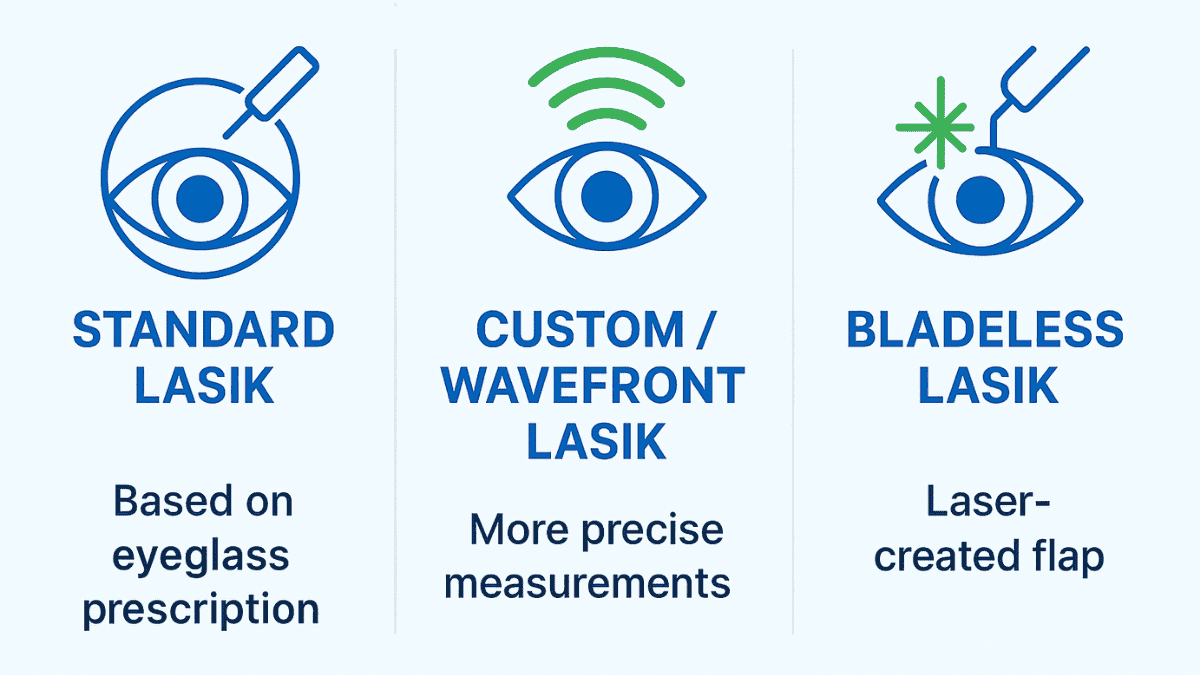
During my research for my correction surgery, I learned about various LASIK techniques. There’s conventional LASIK, and then there’s custom LASIK, often using Wavefront technology. Custom LASIK creates a more personalized treatment plan by mapping the unique imperfections of your eyes.
Some clinics also offer bladeless LASIK, or IntraLase, which utilizes a femtosecond laser. This method uses a femtosecond laser to create the corneal flap, instead of a microkeratome blade. Many people find this reassuring when considering laser eye surgery.
The specific technology used for the corneal refractive procedure can affect the outcome and potentially the recovery. The goal is to achieve precise corneal refractive changes. So, it’s worth discussing with your surgeon which approach is best for your specific eyes and vision needs. This knowledge made me feel much more in control of my LASIK surgery journey.
Related Article
Types of Laser Eye Surgery in 2025Related Article
LASIK AlternativesThe Consultation: Getting Real Answers
I scheduled consultations at two different eye centers. This let me compare their approaches and see where I felt most comfortable for my eye surgery experience. The LASIK consultation is usually free or low cost, and is a critical step.
They performed a lot of tests on my eyes. These included measuring my prescription, cornea thickness, and pupil size, important factors in determining suitability for the vision correction surgery. They also checked for things like dry eye syndrome or any signs of diabetic retinopathy.
The comprehensive eye exam during the LASIK consultation was far more detailed than a standard check-up for glasses. They used specialized equipment to map my corneal curvature with extreme precision and measure its thickness micron by micron. Pupil diameter in different lighting conditions was also noted, as this can affect outcomes like night vision.
Not everyone is a good candidate for LASIK. The eye doctors were very thorough in explaining if I was suitable, which I thankfully was. They also discussed different payment options available for the treatment.
They also screened for underlying eye health issues. Conditions like severe chronic dry eye, very thin corneas, or signs of other eye diseases like early diabetic retinopathy could make someone not a good candidate. Thankfully, my eye health was good, and the refractive surgeon explained how my specific refractive error made me suitable for the laser eye surgery.
We talked about realistic expectations and potential risks for this type of refractive surgery. Yes, there are risks, like with any surgery. These can include dry eyes, glare, or halos, especially impacting night vision initially.
Reputable clinics are very open about these potential issues, and according to the FDA’s guidance on LASIK risks, discussing these openly is crucial. They also discussed the cost, which can vary a lot. Make sure you understand what’s included in the price for your vision correction.
Related Article
LASIK and Thin Corneas: What You Need to KnowPre-Op Jitters and Preparation
Once I chose my clinic and surgeon, and booked the date for my LASIK procedure, the nerves started to kick in. It’s a big step. To prepare, I had to stop wearing contact lenses for a few weeks before the surgery, as wearing contact can alter corneal shape.
This allows your cornea to return to its natural shape. I arranged for a friend to drive me to and from the clinic; this support helps patient morale significantly. You definitely can’t drive yourself home after the procedure.
I also picked up my prescribed eye drops in advance, including a prescription antibiotic to prevent infection. The clinic gave me a list of do’s and don’ts for the days leading up to the day LASIK was scheduled. I also stocked up on lubricating eye drops, knowing they would be essential.
The night before, I tried to get a good night’s sleep, although my mind was racing a bit. I was a mix of excited and anxious. But I kept focusing on the prize: clear vision and freedom from my refractive error.
Surgery Day: My Authentic LASIK Eye Surgery Experience
The day finally arrived. I was surprisingly calm, probably because I felt well-prepared and eager for my LASIK surgery experience. I followed all the pre-op instructions, like not wearing any makeup or perfume.
My friend drove me to the clinic, and we arrived a little early, finding a calm waiting room. The healthcare professionals were ready for me. The entire laser eye process was explained again.
In the waiting room, I tried some calming breathing exercises. The healthcare professionals at the eye center were kind and efficient, which helped. They reviewed my consent forms, making certain I understood everything about the LASIK eye procedure, including the use of the excimer laser and femtosecond laser.
At the Clinic: The Final Checks
The staff at the eye center were very reassuring. They did some final eye measurements and answered my last-minute questions about the LASIK eye surgery. The surgeon came in to talk with me again.
He explained the vision correction procedure one more time, step by step. They gave me some numbing eye drops. These worked very quickly, and my eyes started to feel a bit heavy.
I was also offered a mild sedative to help me relax, which I gladly accepted. It helped take the edge off my nervousness before the eye surgery. I began to feel confident that I was in good hands.
The Procedure Itself: What It Felt Like
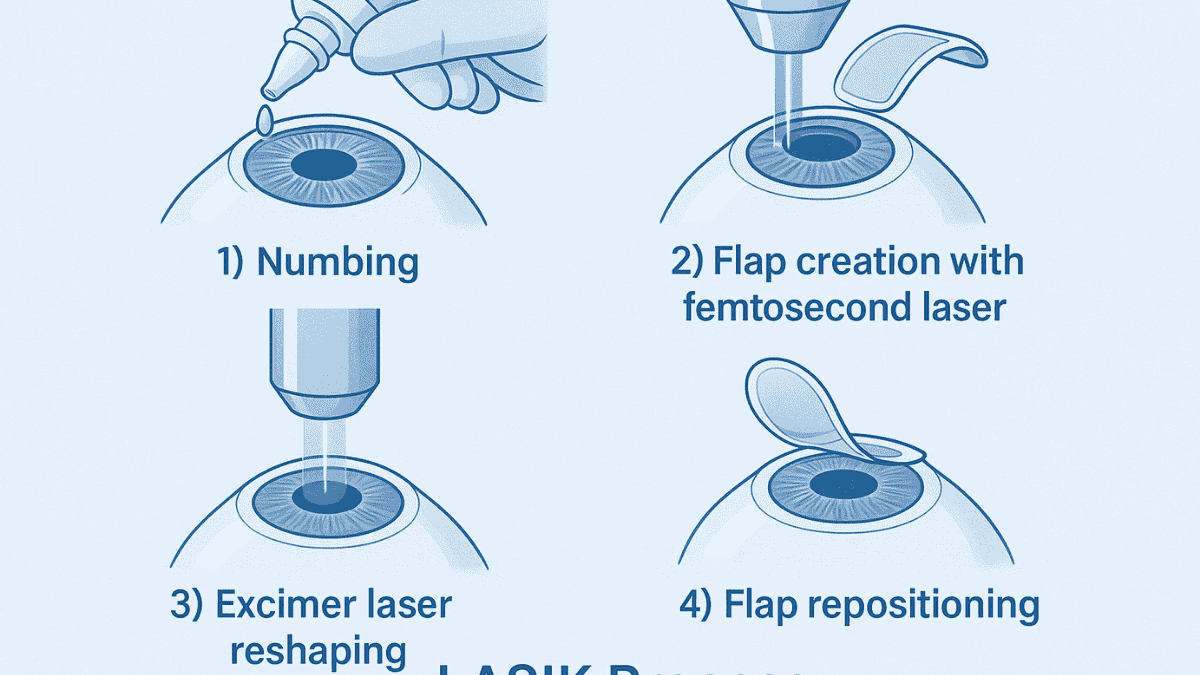
Then it was time to go into the laser suite. I lay down on a comfortable reclining chair under the laser machine, which housed the excimer laser. They gently taped my eyelids open for one eye.
It sounds strange, but with the numbing drops, I didn’t feel much, just a slight pressure. During the corneal flap creation (they used a femtosecond laser in my case), I felt a bit of pressure. It wasn’t painful, just an odd sensation for this part of the laser vision correction.
Then came the excimer laser part. I was asked to look at a blinking light. I could hear the clicking sound of the laser, and there was a distinct smell, often described as burnt hair; this part of the LASIK eye procedure was very quick, maybe 30 seconds per eye.
The surgeon talked me through each step, which was very calming. Before I knew it, he was repositioning the flap. And then, the same process for the other eye; I didn’t feel a thing.
The whole thing in the laser room probably took less than 15 minutes for both eyes. This efficiency is a hallmark of modern refractive surgery techniques. I kept my eyes closed as much as possible immediately after.
Immediately After: The First Glimpse
As soon as it was over, I could already tell a difference. My vision was blurry, almost like looking through water. But, I could make out shapes and lights much better than I could without my glasses just minutes before; it was an amazing feeling.
They checked my eyes one last time. I was given dark sunglasses to wear and a schedule for my eye drops. My eyes felt a bit scratchy and watery, but no real pain from the LASIK surgery.
The First 24 Hours: Recovery Begins
The instructions for my LASIK recovery were clear: go home and rest with my eyes closed as much as possible. So that’s what I did. The light sensitivity was quite strong, so I kept the room dark and wore the sunglasses.
There was some discomfort during these first few hours, a common part of the eye surgery experience. It felt like I had an eyelash in my eye, or like I’d been chopping onions. It wasn’t unbearable, but it was definitely noticeable.
The sensation wasn’t pain, more like a persistent gritty feeling, as if a tiny speck of sand was under my eyelid. My eyes teared up quite a bit, a natural response. Keeping my eyes closed provided the most relief, and I listened to audiobooks to pass the time.
I used the prescribed lubricating eye drops and antibiotic eye drops religiously. This is super important for healing and preventing infection. These prescription eye drops were my constant companions.
Week One Post-LASIK: Healing and Adjustments
I had my first follow-up appointment the day after surgery. The surgeon checked my eyes and my vision. I could already read much further down the eye chart. It was an exciting confirmation that the LASIK eye surgery experience was working.
For the first week, my vision continued to improve, but it also fluctuated a bit. Some moments were crystal clear, others a little hazy. This is normal, as your eyes are still healing from the laser vision correction.
For example, I might wake up with surprisingly sharp LASIK vision, then notice it become slightly less crisp by the afternoon, especially if I spent time looking at screens causing eye strain. My eye doctor had warned me this was part of the normal LASIK recovery. It was a lesson in patience, trusting that the final clear vision would emerge.
I continued with the eye drop schedule diligently. These drops help with inflammation and prevent dryness, which can be common after LASIK. My eye doctor stressed the importance of this step.
There were some restrictions. No rubbing my eyes, obviously. I had to avoid getting water directly in my eyes when showering.
No swimming, hot tubs, or strenuous exercise for a little while. And I wore sunglasses outdoors, even on cloudy days, to protect my healing eyes. These follow-up appointments were crucial.
Related Article
Dry Eye Syndrome After LASIKBeyond the First Week: Long-Term Vision and Life Changes
Over the next few weeks and months, my vision stabilized. The initial haziness and light sensitivity gradually disappeared. I had a few more follow-up appointments to monitor my progress towards clear vision.
Each time, my vision was a little sharper. The biggest change? Waking up every morning and seeing the world clearly.
It sounds simple, but it’s a profound difference. No more fumbling for glasses. No more dry, irritated eyes from contacts, especially the chronic dry sensation I used to have.
I could swim and see, play sports without worry, and just enjoy life with a new sense of visual freedom. This LASIK vision was what I had hoped for. My overall eye health felt improved.
I did experience some dry eyes for a few months after the procedure. This is a common side effect and sometimes leads to what’s known as chronic dry eye if not managed. I used lubricating eye drops as needed, and it eventually improved.
The dry eyes were most noticeable when I woke up or after prolonged computer use. Using preservative-free lubricating eye drops frequently became a habit, much like applying lip balm. Over several months, the need for these lubricating eye drops gradually lessened as my tear film normalized.
Some people notice halos or glare around lights at night, especially in the early months, affecting their night vision. This also faded for me over time. Consistent use of prescription eye drops helped manage symptoms.
Regarding night vision, initially, oncoming headlights seemed to have larger starbursts, and streetlights had more pronounced halos. This improved significantly month by month. Driving at night became comfortable again after about three to four months, though I remained a bit more cautious during that adjustment period.
Related Article
Night Vision After LASIK: What to ExpectHere’s a quick summary of my LASIK journey stages:
| Stage | Key Activities & Feelings | Focus Points |
|---|---|---|
| Research & Decision | Reading online, consulting friends, initial consultations with eye doctors. Feeling hopeful but nervous. | Finding a reputable eye center, understanding options. |
| Pre-Surgery Prep | Stopping contact lens wear, arranging transport, getting prescription eye drops. Increased anticipation. | Following all pre-op instructions from the refractive surgeon. |
| Surgery Day | Final checks, numbing drops, the quick laser procedure (femtosecond laser and excimer laser). Calm but aware. | Staying relaxed, focusing on surgeon’s guidance. |
| Immediate Post-Op | Blurry vision but noticeable improvement, scratchiness, light sensitivity. Feeling amazed. | Resting, starting eye drops, wearing sunglasses. |
| First 24 Hours | Discomfort managed with rest and drops, protective shields for sleep. Vision clearing. | Strict adherence to eye drop schedule. |
| First Week | Fluctuating but improving vision, follow-up appointment. Adjusting to new vision. | Avoiding eye rubbing, water in eyes, continuing drops. |
| Long-Term Recovery | Vision stabilizing, dry eyes managed with lubricating eye drops, night vision improving. Enjoying clear vision. | Attending follow-up appointments, patience. |
Was It Worth It? My Honest Take
For me, absolutely yes. The freedom and convenience of clear vision without corrective lenses has been life-changing. The procedure itself was quick, and the recovery was manageable, a true success for my vision correction journey.
The cost was an investment, but one I feel has paid off in quality of life. But LASIK isn’t for everyone. It’s a surgical procedure with potential risks and side effects, something all eye doctors emphasize.
It’s important to have realistic expectations for any correction procedure. My experience was very positive, but individual results can vary. Talking to others about their LASIK experience can also be helpful.
My advice is to do thorough research. Choose an experienced surgeon you trust for your LASIK surgery. And make sure you’re a good candidate for the laser eye surgery.
If you are, the outcome can be truly amazing. Many people find it’s the best decision for their refractive error. This positive surgery experience is common.
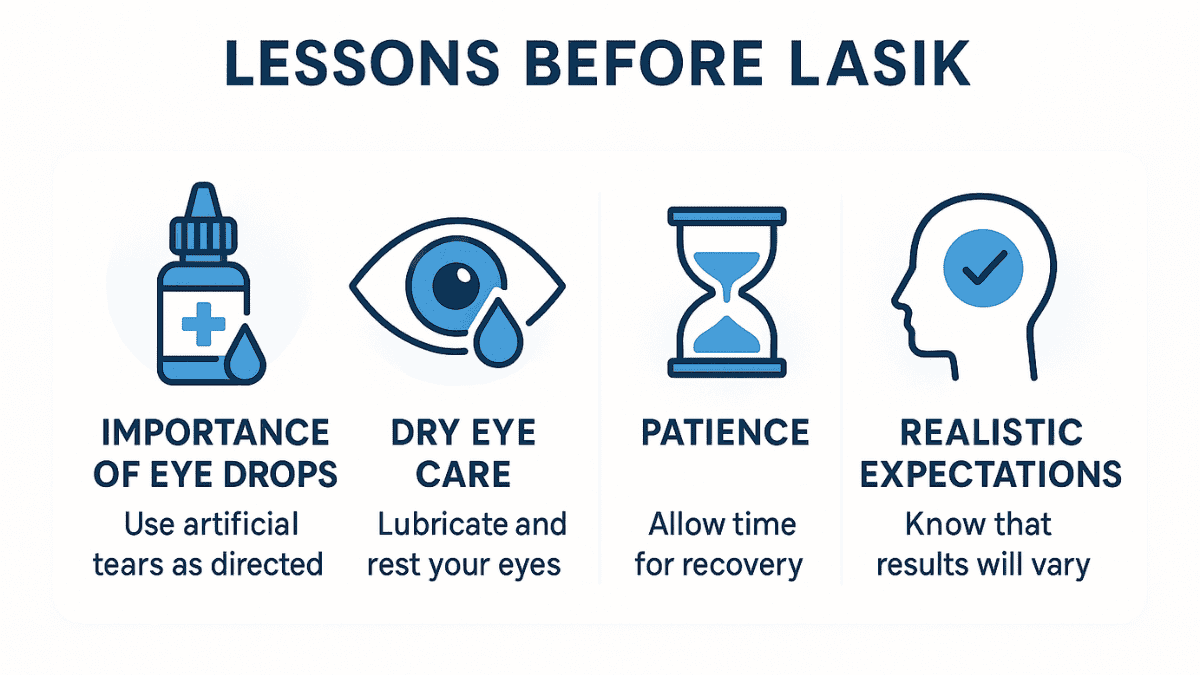
Things I Wish I Knew Before LASIK
Looking back, there are a couple of things I would emphasize to anyone considering this path for vision correction surgery. First, the importance of religiously using the eye drops cannot be overstated. They are vital for healing and comfort during the LASIK recovery.
Second, be prepared for some emotional ups and downs during your LASIK surgery experience. The initial recovery has visual fluctuations, and it’s easy to get anxious. Trust the process and communicate with your doctor if you have concerns; they are used to helping patients navigate this.
They’ve seen it all before. Lastly, understand that dry eyes can be a temporary (or sometimes longer-term) side effect for many. Knowing this upfront and being prepared with good quality lubricating eye drops can make the recovery smoother, especially if you are prone to dry eye.
Despite these small points, my journey was overwhelmingly positive. I didn’t feel any significant pain, and the results were life-altering. I feel confident recommending serious consideration of LASIK to suitable individuals.
Conclusion
My LASIK eye surgery experience transformed how I see the world, literally. It took me from a life dependent on visual aids to one of effleess clarity. The journey involved research, some nervousness, and a recovery period, but the results have been worth every step for my LASIK vision.
If you’re tired of glasses and contact lens wear, exploring your options for a LASIK eye surgery experience might just be the start of your own clear-vision adventure. This type of eye surgery can be a significant positive change. It certainly was for me, and it all started with an initial consultation.
During LASIK, you won’t feel pain thanks to numbing drops. Most patients describe it as pressure on the eye, followed by a clicking sound and slight smell as the laser reshapes the cornea. The process is quick and surprisingly tolerable.

The LASIK procedure usually takes about 10–15 minutes for both eyes. The laser reshaping portion lasts under one minute per eye, thanks to precise excimer laser technology.

Yes, feeling nervous before LASIK is very common. Many patients experience a mix of excitement and anxiety, which is eased by preparation, clear communication with your surgeon, and optional mild sedation.

After surgery, your vision will be blurry but improved. You’ll wear dark sunglasses, start your eye drops, and be instructed to keep your eyes closed and avoid light as much as possible for the first few hours.

You should rest with your eyes closed, use lubricating and antibiotic eye drops as prescribed, and avoid screens, lights, and touching your eyes. This helps minimize discomfort and supports healing.

Most people notice clearer vision within the first few days, but it may take several weeks for full stabilization. Vision may fluctuate during the first week, especially after screen time.

Avoid rubbing your eyes, swimming, makeup, and strenuous exercise for at least a week. Sunglasses are essential outdoors, and direct water contact should be avoided during showers.

Yes, dry eyes are a common temporary side effect of LASIK. Using preservative-free lubricating eye drops can help manage dryness, especially during the first few months.

Most patients return to work within 1–2 days, especially for non-strenuous or screen-free roles. If your job involves screen use, take regular breaks and use eye drops frequently.

You cannot drive on the day of surgery. Most patients regain sufficient vision to drive within 24 to 48 hours, but it’s important to follow your surgeon’s advice and ensure clarity before driving.



